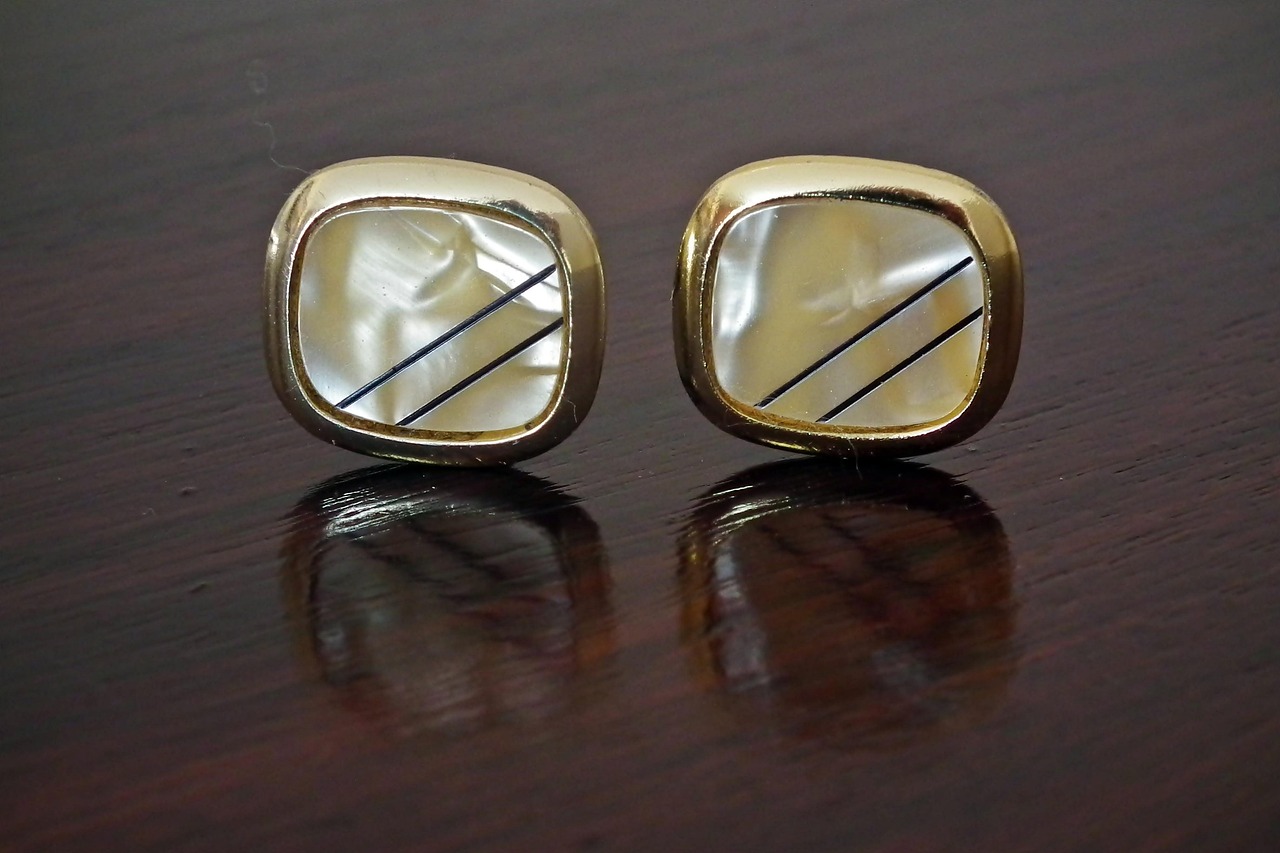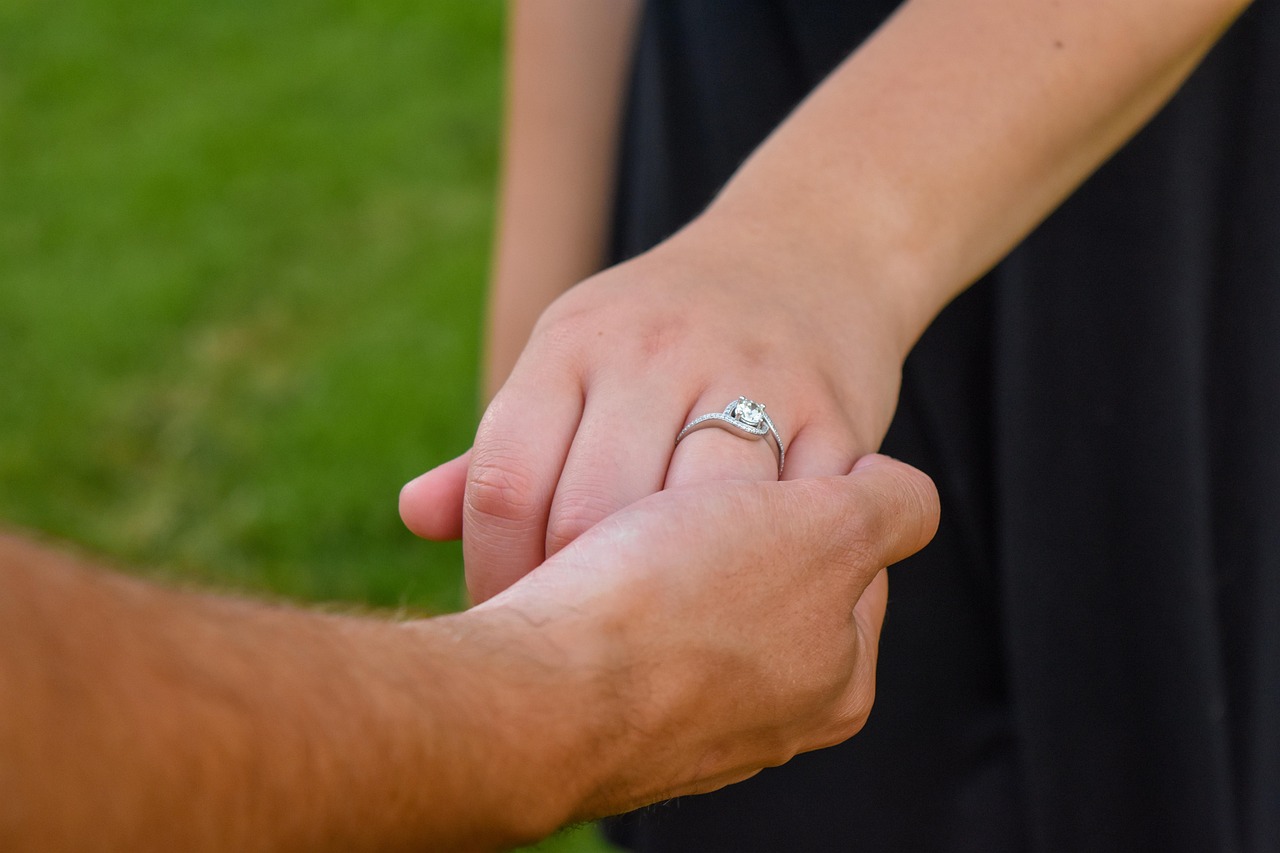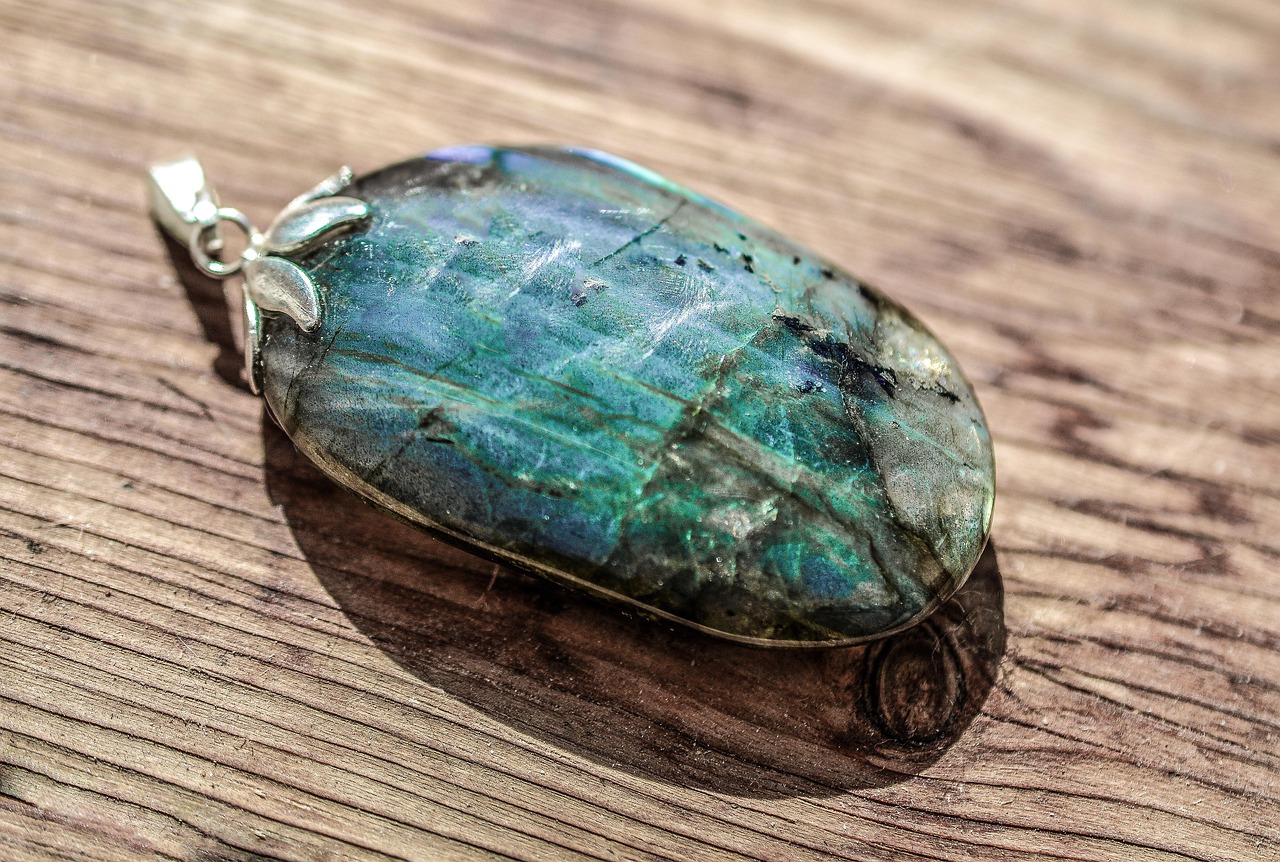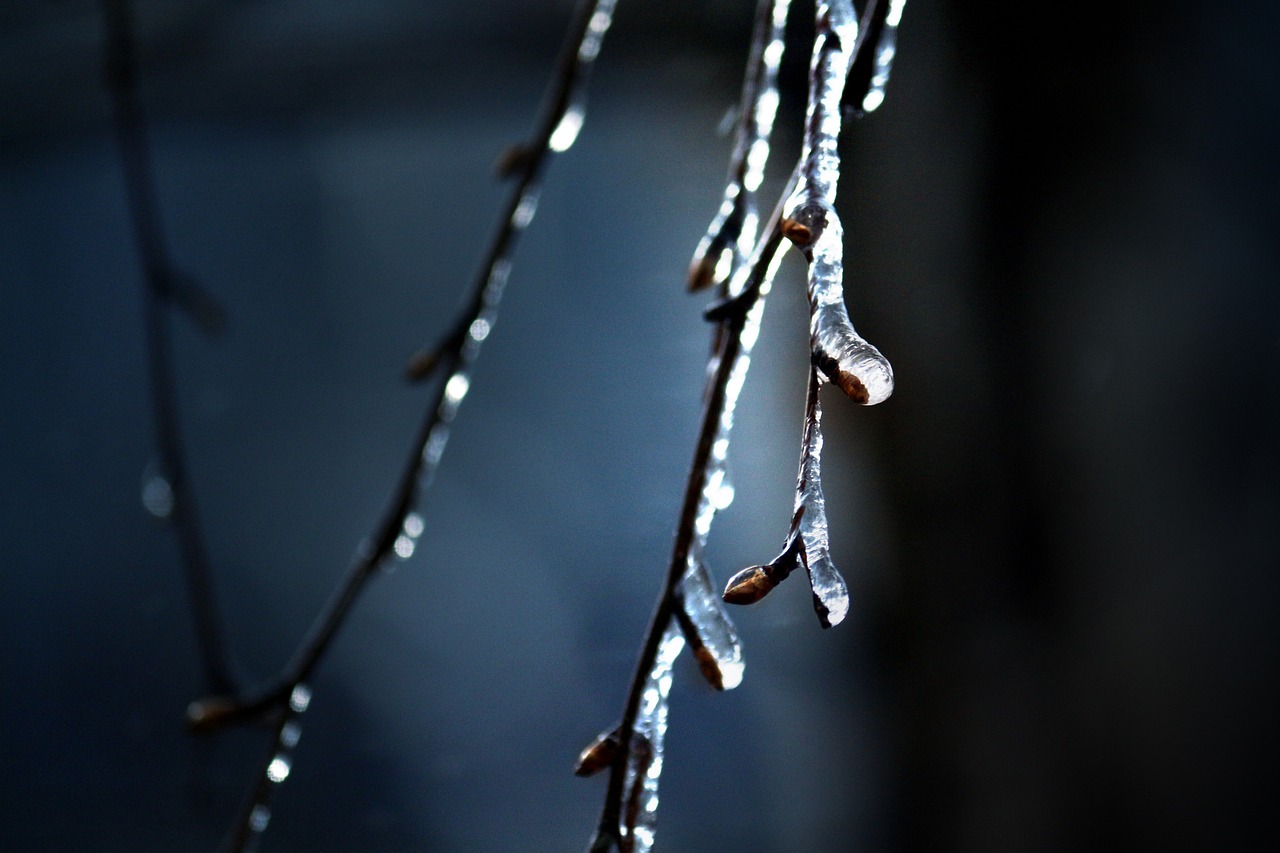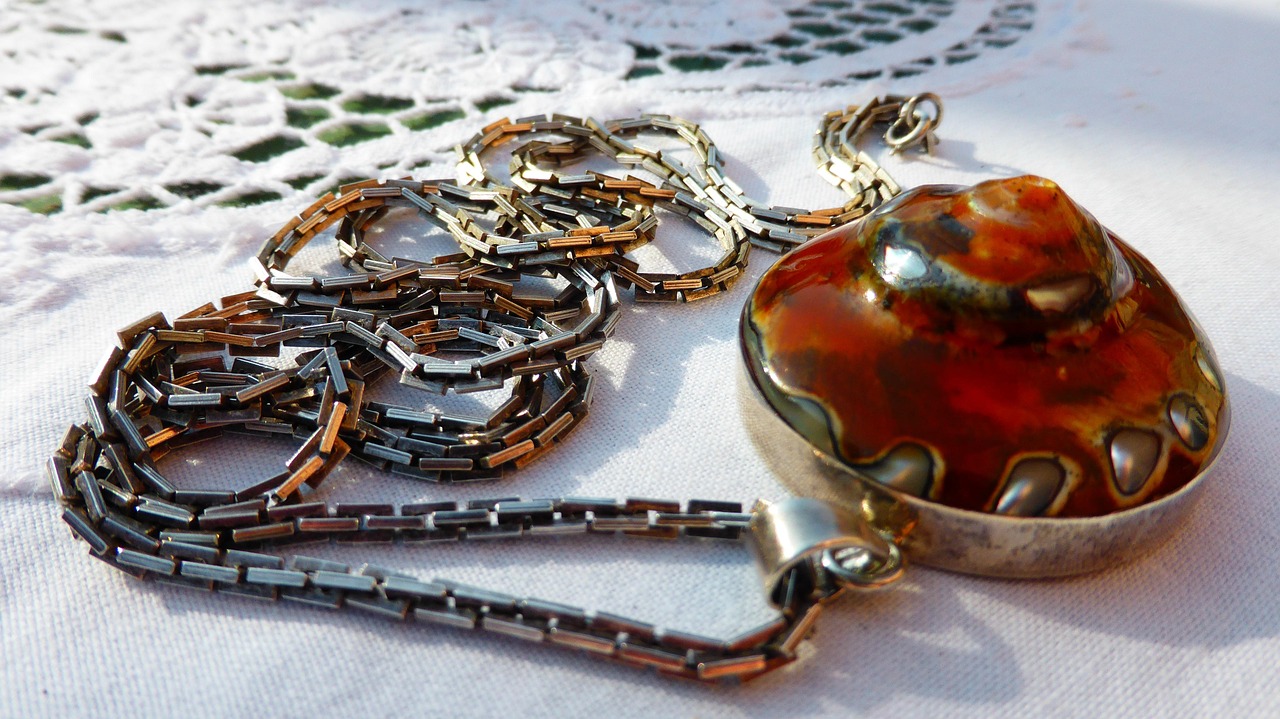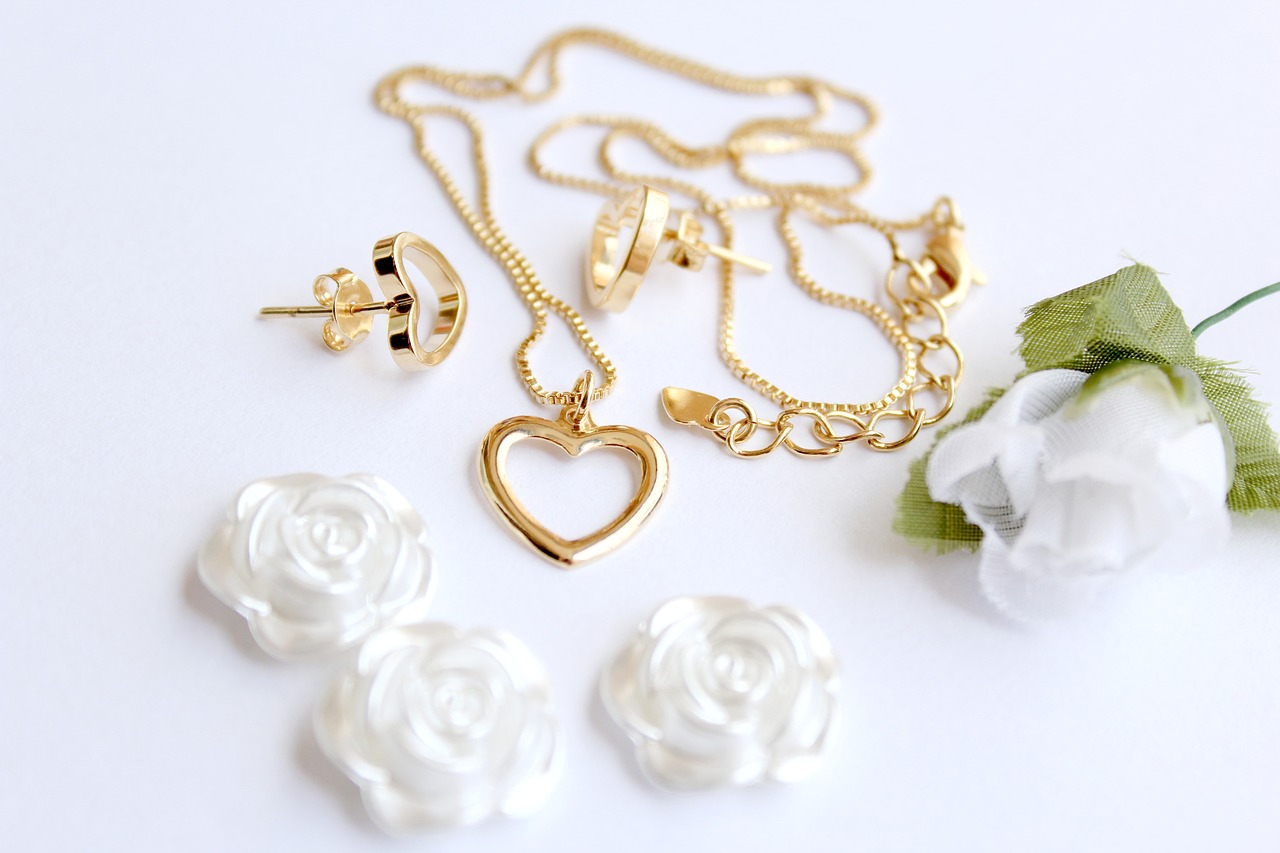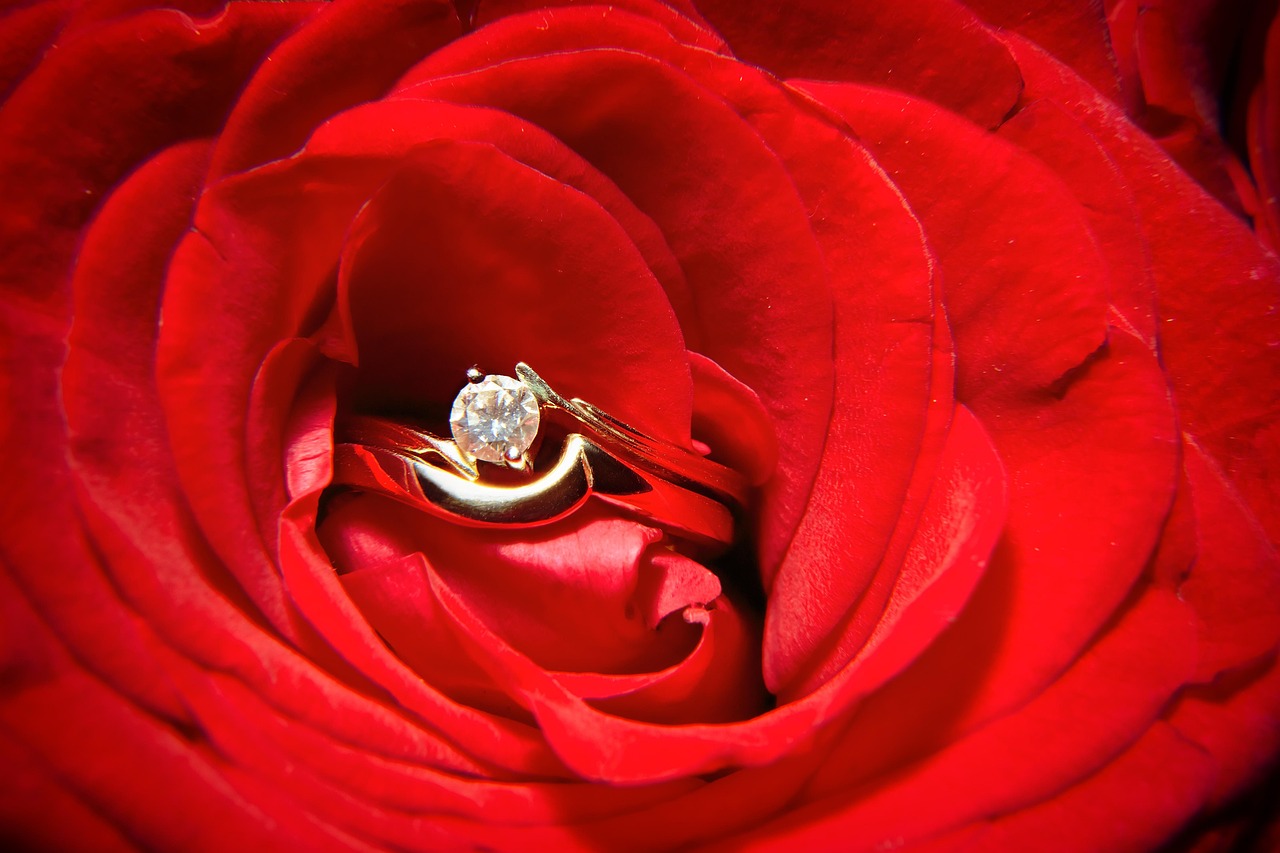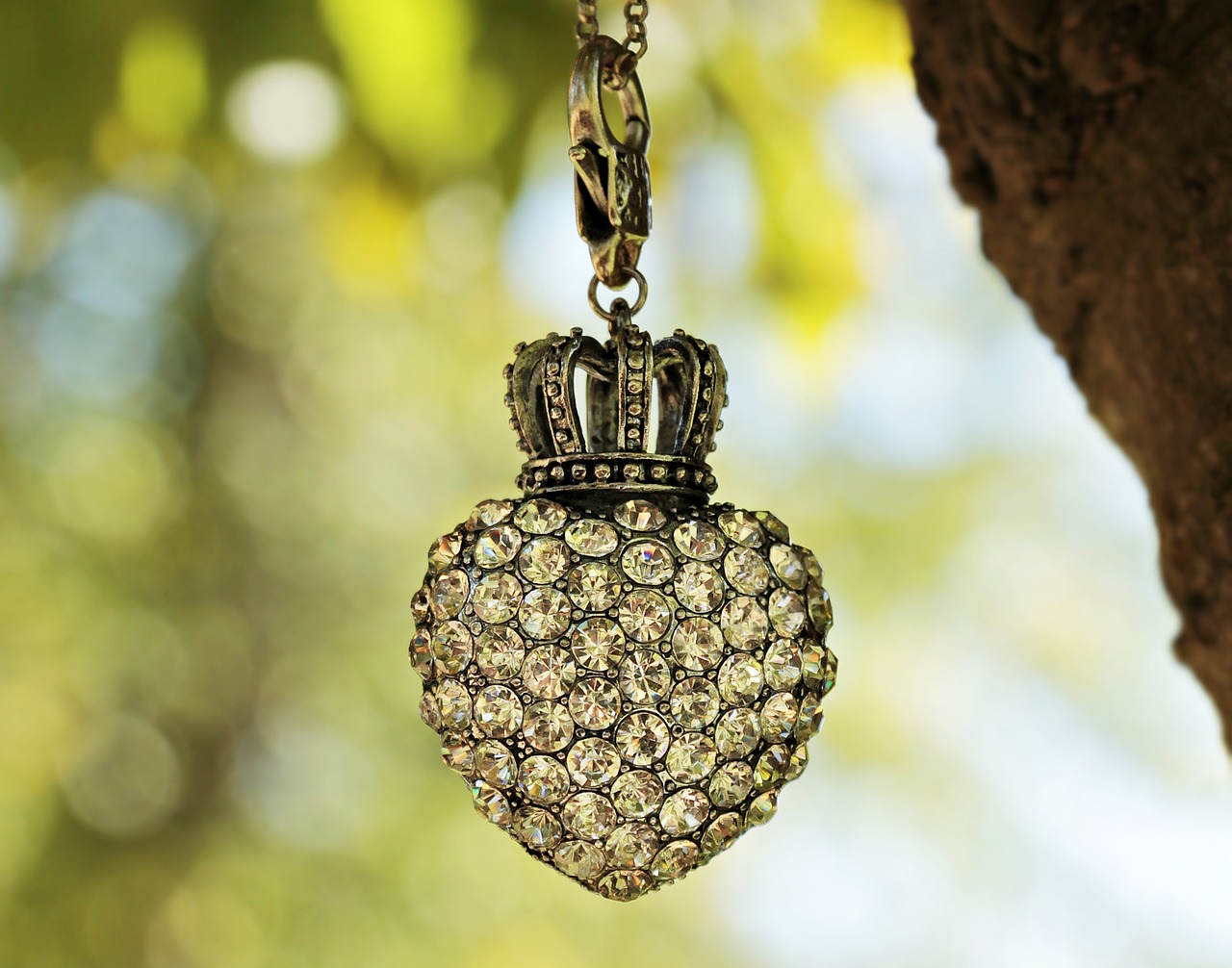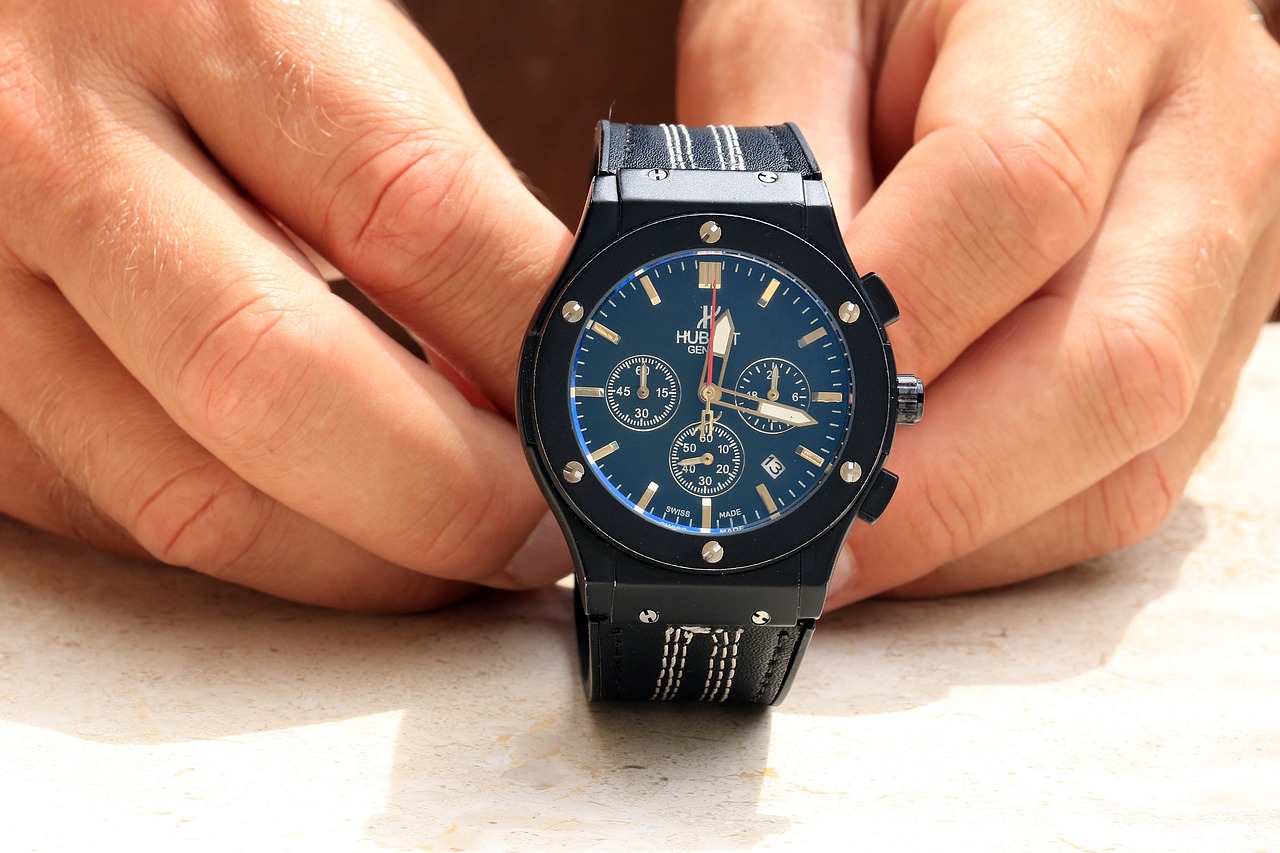This article delves into effective strategies to safeguard your jewelry from the damaging effects of harsh weather, ensuring that your precious items remain in pristine condition year-round.
Understanding the impact of weather on jewelry is crucial. Extreme temperatures, humidity, and precipitation can lead to tarnishing, corrosion, and other forms of damage, necessitating protective measures. Jewelry is not just an accessory; it often holds sentimental value and represents significant financial investment.
- Rain: Water exposure can cause metals to rust and stones to lose their shine.
- Snow: The moisture and cold can lead to condensation inside storage cases.
- Humidity: High humidity levels can cause metals to tarnish and stones to become cloudy.
- Extreme Heat: Heat can weaken certain materials and cause gemstones to crack.
High humidity levels can cause metals to tarnish and stones to become cloudy. Knowing how to mitigate these effects can prolong the life and beauty of your jewelry. For example, silver is particularly vulnerable to tarnishing in humid conditions.
Utilizing silica gel packets and airtight containers can help absorb moisture and keep your jewelry safe from humidity-related damage. It’s advisable to store jewelry in a cool, dry place away from direct sunlight.
Cleaning your jewelry after exposure to moisture prevents long-term damage. Residual moisture can lead to corrosion, so it’s essential to ensure that any corrosive elements are removed promptly.
Heat can weaken certain materials and cause gemstones to crack or lose their luster. Understanding these risks can help you take preventative measures, such as avoiding wearing jewelry in extremely hot conditions.
Proper storage techniques are vital during bad weather. Using padded cases and avoiding direct sunlight can protect your jewelry from environmental damage. Additionally, consider using anti-tarnish strips in your storage boxes.
- Gold and Silver: Store separately to prevent scratching and tarnishing.
- Gemstones: Keep them in soft pouches to avoid scratches.
- Organic Materials: Items like pearls should be kept in a cool, dry place away from direct heat.
Applying protective coatings can create a barrier against moisture and temperature fluctuations, extending the life of your jewelry significantly. These coatings can be particularly beneficial for pieces made from more vulnerable materials.
Identifying vulnerable materials helps in choosing the right jewelry for specific weather conditions. Some metals and stones are more susceptible to damage than others, making it essential to understand their properties.
Organic materials can be particularly sensitive to environmental changes. For instance, pearls can absorb moisture, which may lead to discoloration over time. Understanding their needs can help maintain their beauty and integrity.
Certain activities and conditions can exacerbate damage to jewelry. Avoiding exposure to harsh chemicals, physical impacts, and extreme temperatures can help preserve your pieces. Always take off your jewelry when engaging in strenuous activities or when swimming.
Regular maintenance is key to keeping your jewelry in top condition. Cleaning, inspecting, and storing jewelry properly can prevent weather-related damage. Establishing a routine based on usage can be beneficial.
Regular cleaning schedules can help maintain the shine and integrity of your jewelry. Depending on the frequency of wear, a monthly cleaning routine may be ideal.
Engaging professional jewelers for cleaning and maintenance can provide specialized care that extends the life of your jewelry, ensuring it remains beautiful for years to come. Regular inspections can also identify potential issues before they become serious problems.
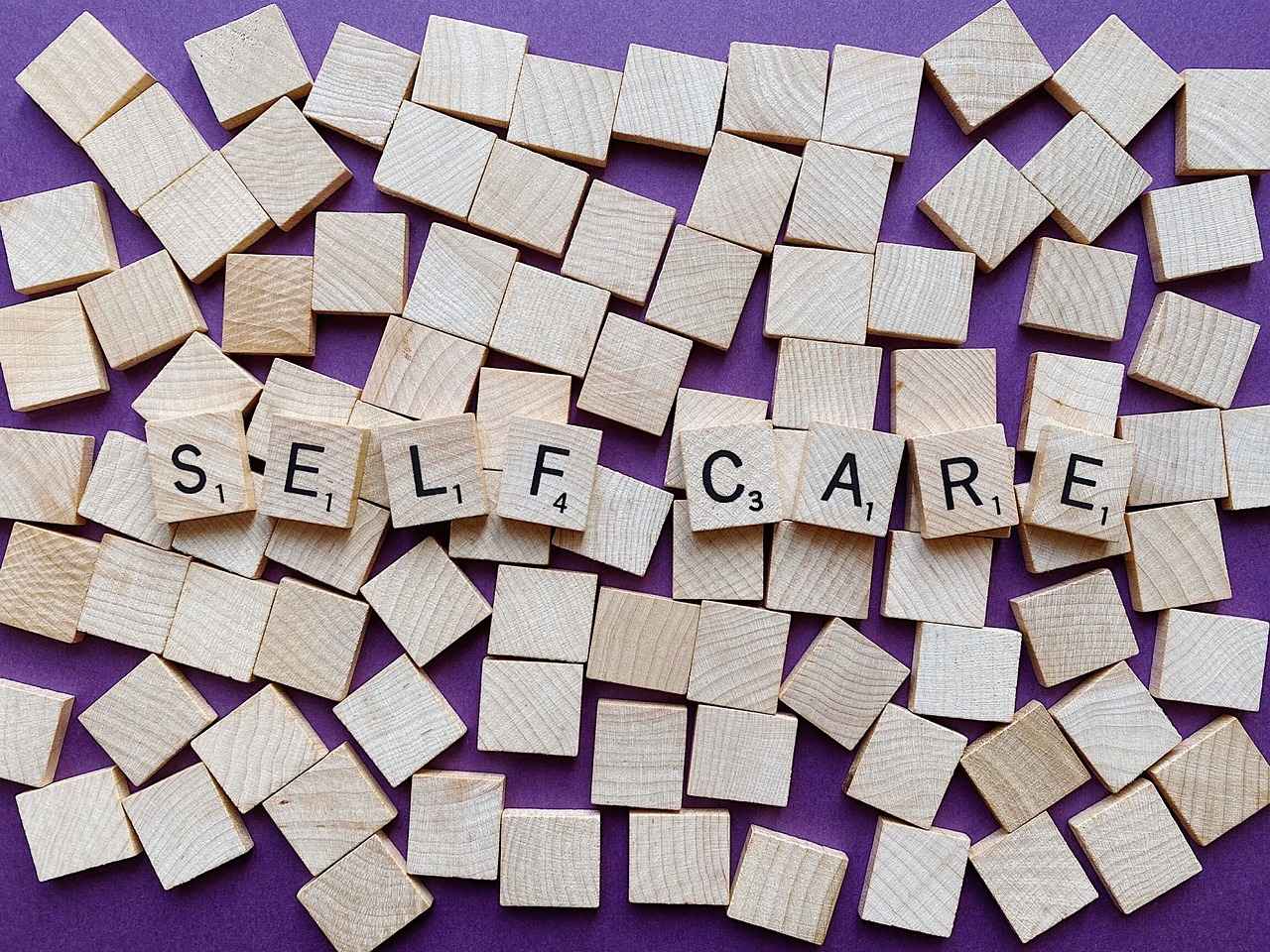
Why Is Weather Protection Important for Jewelry?
Understanding the significance of weather protection for jewelry is essential for any jewelry owner. Jewelry, whether it be precious metals, gemstones, or organic materials, can be significantly affected by environmental conditions. Extreme temperatures, high humidity, and precipitation can lead to a variety of issues, including tarnishing, corrosion, and structural damage. Therefore, taking proactive measures to protect your jewelry is not just advisable but necessary to maintain its integrity and beauty.
Jewelry is often seen as a long-term investment, both financially and sentimentally. Protecting it from harsh weather conditions can extend its lifespan and preserve its aesthetic appeal. Exposure to extreme temperatures can cause metals to expand and contract, leading to cracks or breaks. For instance, gold and silver can become brittle under intense heat, while gemstones may lose their luster or even shatter. This makes understanding the effects of weather on your jewelry an important part of jewelry care.
- Rain and Snow: Water can lead to tarnishing, especially for metals like silver.
- High Humidity: Moisture in the air can cause metals to corrode and stones to become dull.
- Extreme Heat: High temperatures can weaken materials and lead to irreversible damage.
- Cold Weather: Freezing temperatures can cause certain gemstones to crack.
High humidity levels are notorious for causing metals to tarnish and gemstones to lose their clarity. When moisture settles on jewelry, it can create an environment conducive to corrosion. For instance, silver jewelry can develop a black tarnish due to moisture reacting with the metal. To mitigate these effects, consider using silica gel packets or dehumidifiers in your jewelry storage area.
To protect your jewelry from humidity, store it in airtight containers or padded cases. This will help keep moisture at bay and prevent tarnishing. Additionally, regularly checking your jewelry for signs of damage can help you catch issues early, ensuring your pieces remain in excellent condition.
Cleaning your jewelry after exposure to moisture is crucial. It helps remove any corrosive elements that may have settled on the surface. Use a soft cloth to gently wipe down your pieces and consider using a mild soap solution for deeper cleaning. This simple act can prevent long-term damage and keep your jewelry looking its best.
Extreme heat can compromise the structural integrity of certain materials. For example, gemstones can lose their vibrant colors or even crack under high temperatures. Understanding these risks allows you to take necessary precautions, such as avoiding wearing your jewelry in direct sunlight or during hot outdoor activities.
Proper storage techniques are vital during inclement weather. Using padded cases and keeping your jewelry in a cool, dry place can protect it from environmental damage. Avoid storing jewelry in areas prone to temperature fluctuations, such as attics or basements.
Regular maintenance is key to keeping your jewelry in top condition. Establishing a cleaning routine based on usage can help maintain the shine and integrity of your pieces. Consider engaging professional jewelers for periodic inspections and maintenance, as they can provide specialized care tailored to your jewelry’s specific needs.
In conclusion, taking the necessary steps to protect your jewelry from harsh weather conditions is vital for preserving its beauty and value. By understanding the impact of environmental factors and implementing effective storage and maintenance practices, you can ensure that your jewelry remains a cherished part of your collection for years to come.
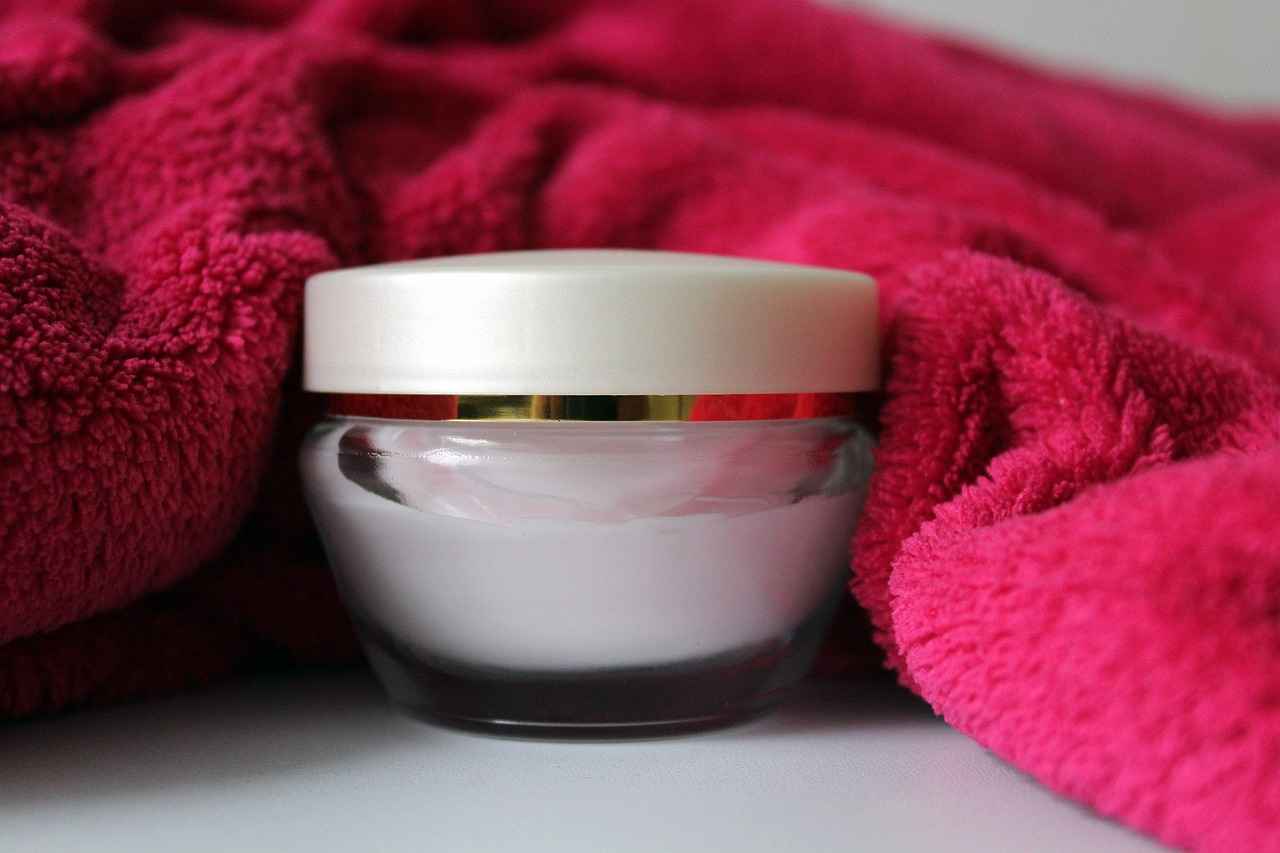
What Types of Weather Can Damage Jewelry?
Jewelry is often seen as a symbol of elegance and personal expression, but it is not immune to the effects of the environment. Different weather conditions can pose unique threats to jewelry, leading to damage that may not be immediately apparent. Understanding these risks is essential for any jewelry owner who wishes to maintain the beauty and integrity of their cherished pieces.
Various weather conditions can affect jewelry differently. Here are some of the most common types of weather and their potential impact:
- Rain: Exposure to rain can lead to moisture accumulation, which may cause metals to tarnish and stones to lose their luster. Even a brief encounter with rain can have lasting effects, especially if the jewelry is not dried promptly.
- Snow: Similar to rain, snow can introduce moisture to your jewelry. Additionally, the cold temperatures can make certain materials brittle, increasing the risk of cracking or breaking.
- Humidity: High humidity levels are particularly harmful. They can accelerate the tarnishing process in metals like silver and cause gemstones to appear cloudy. Humidity can also promote the growth of mold or mildew, especially on organic materials.
- Extreme Heat: Heat can weaken certain materials, leading to structural damage. For instance, some gemstones can crack under high temperatures, while plastics and synthetic materials may warp or discolor.
Humidity can be a silent enemy to jewelry. High humidity levels can lead to the oxidation of metals, particularly silver, resulting in unsightly tarnish. Furthermore, organic materials like pearls and coral can absorb moisture, potentially leading to irreversible damage.
Extreme heat can have detrimental effects on various jewelry materials. For example, it can cause gemstones to lose their brilliance or even crack. Additionally, heat can weaken the structural integrity of certain metals, making them more susceptible to bending or breaking.
To protect your jewelry from humidity, consider the following storage tips:
- Store jewelry in airtight containers to minimize moisture exposure.
- Use silica gel packets to absorb excess humidity within the storage space.
- Keep your jewelry in a cool, dry place away from direct sunlight.
Understanding which materials are most susceptible to weather damage can help you make informed choices when wearing jewelry:
- Silver: Highly prone to tarnishing in humid conditions.
- Gold: While more resistant than silver, it can still be affected by extreme temperatures.
- Pearls: Sensitive to both humidity and heat, requiring special care.
- Coral: An organic material that can degrade with moisture exposure.
To preserve your jewelry, avoid the following:
- Wearing jewelry during heavy rain or snow.
- Exposing jewelry to harsh chemicals, such as those found in cleaning products.
- Engaging in physical activities that may lead to impacts or scratches on your jewelry.
By understanding the specific threats posed by different weather conditions, you can take proactive measures to protect your jewelry. Whether it’s through proper storage techniques or mindful wearing habits, safeguarding your precious items is essential for ensuring their longevity and beauty.
How Does Humidity Affect Jewelry?
Humidity can have a significant impact on the condition and appearance of your jewelry. Understanding how these moisture levels affect various materials is crucial for maintaining the beauty and longevity of your precious items. High humidity levels can lead to tarnishing of metals and cause gemstones to appear cloudy. By implementing effective strategies, you can mitigate these effects and ensure your jewelry remains stunning.
When humidity levels rise, metals such as silver and copper are particularly vulnerable. The moisture in the air can react with the metal, resulting in tarnishing. This tarnish not only affects the aesthetic appeal but can also lead to corrosion if left unaddressed. Regular cleaning and proper storage are essential to prevent these issues.
Gemstones are not immune to the effects of high humidity. Certain stones, like opal and pearl, can absorb moisture, leading to a cloudy appearance. This absorption can compromise their integrity and brilliance. To protect these delicate stones, it is essential to keep them dry and store them in a controlled environment.
- Use Silica Gel Packets: Placing silica gel packets in your jewelry box can help absorb excess moisture, creating a drier environment for your jewelry.
- Airtight Containers: Store your jewelry in airtight containers to limit exposure to humid air. This simple step can significantly reduce tarnishing and cloudiness.
- Regular Cleaning: Clean your jewelry regularly to remove any moisture and tarnish. Using a soft cloth and appropriate cleaning solutions can help maintain their shine.
Cleaning your jewelry after exposure to humidity is crucial in preventing long-term damage. Moisture can trap dirt and grime, leading to stains or discoloration over time. By promptly cleaning your jewelry, you eliminate corrosive elements that can cause irreversible damage.
- Avoid Wearing Jewelry in Humid Conditions: If possible, remove your jewelry before engaging in activities that may expose it to high humidity, such as swimming or exercising.
- Limit Contact with Chemicals: Household cleaners and personal care products can be harsh on jewelry. Avoid exposing your pieces to these substances, especially in humid environments.
Proper storage is key to protecting your jewelry from humidity-related damage. Consider using anti-tarnish cloths or pouches, which can help absorb moisture and prevent tarnishing. Additionally, keeping your jewelry in a climate-controlled area can further safeguard it from the adverse effects of humidity.
By understanding the ways humidity affects your jewelry and implementing these protective measures, you can ensure that your treasured pieces remain beautiful and in excellent condition for years to come. Regular maintenance, proper storage, and immediate cleaning after exposure to moisture are essential practices that every jewelry owner should adopt.
What Are the Best Ways to Store Jewelry in Humid Conditions?
When it comes to preserving the beauty and integrity of your jewelry, understanding the best storage methods in humid conditions is essential. High humidity levels can lead to tarnishing, cloudiness in gemstones, and even corrosion of metals. Therefore, implementing effective storage strategies can significantly extend the life of your treasured pieces.
One of the most effective ways to combat humidity is by using silica gel packets. These small packets are designed to absorb moisture from the air, creating a drier environment for your jewelry. Placing a few packets in your jewelry box or storage container can help maintain optimal humidity levels, preventing damage caused by excess moisture.
Another practical solution is to store your jewelry in airtight containers. These containers not only keep dust and dirt at bay but also protect your jewelry from humidity fluctuations. Look for containers made of materials that do not react with metals, such as plastic or glass. This ensures that your jewelry remains safe and untarnished.
In addition to proper storage, it’s crucial to regularly inspect your jewelry for any signs of damage. Check for tarnishing or discoloration, especially in humid conditions. Early detection allows you to clean and restore your pieces before any irreversible damage occurs.
Consider incorporating anti-tarnish strips into your storage solutions. These strips release chemicals that help prevent tarnish on metals, making them an excellent addition to your jewelry storage practices. Simply place a strip in your jewelry box or container to add an extra layer of protection.
Before storing your jewelry, ensure that it’s clean and dry. Residues from lotions, perfumes, or moisture can contribute to tarnishing and other forms of damage. Use a soft cloth to gently wipe down your pieces before placing them in storage.
Organizing your jewelry by type can also help prevent damage. For instance, store delicate items like pearls separately from harder materials like gold or silver. This prevents scratching and ensures that each piece is stored in the best possible condition.
Lastly, try to maintain a consistent environment for your jewelry storage. Avoid placing your jewelry in areas that experience drastic temperature or humidity changes, such as bathrooms or near windows. A cool, dry place is ideal for keeping your jewelry safe.
By following these tips and utilizing silica gel packets and airtight containers, you can effectively protect your jewelry from humidity-related damage. Taking these proactive steps will ensure that your cherished items remain beautiful and well-preserved for years to come.
Why Is It Important to Clean Jewelry After Exposure to Humidity?
Jewelry is not just an accessory; it often carries sentimental value and represents significant investments. Therefore, understanding the importance of maintaining its condition is crucial. One of the key aspects of jewelry care is cleaning your jewelry after exposure to humidity. This practice not only helps in preserving the aesthetic appeal of your pieces but also ensures their longevity.
Humidity can create a perfect environment for corrosive elements to thrive. When moisture accumulates on jewelry, especially those made from metals like silver and gold, it can lead to tarnishing. Additionally, gemstones may become cloudy or lose their luster. Cleaning jewelry promptly after exposure to moisture can significantly reduce these risks.
When jewelry is exposed to moisture, it can attract dirt and grime, which can embed into the surfaces of your pieces. By cleaning your jewelry immediately, you remove these potentially damaging particles. This practice can prevent:
- Tarnishing: Particularly common with silver jewelry, tarnishing can lead to a dull appearance.
- Corrosion: Certain metals can react adversely to moisture, leading to degradation over time.
- Cloudiness in Gemstones: Moisture can create a film over gemstones, dulling their shine.
To effectively clean your jewelry after it has been exposed to humidity, consider the following steps:
- Rinse with Clean Water: If your jewelry has been exposed to rain or sweat, a gentle rinse can help remove moisture.
- Use a Soft Cloth: Dry your jewelry with a soft, lint-free cloth to prevent scratches.
- Avoid Harsh Chemicals: Stick to mild soap and water for cleaning, as harsh chemicals can damage delicate materials.
- Inspect for Damage: After cleaning, check for any signs of wear or damage that may need professional attention.
While regular cleaning can be done at home, certain situations may require professional intervention. If you notice persistent tarnishing, discoloration, or damage to gemstones, it is advisable to consult a professional jeweler. They can provide specialized cleaning and maintenance services that ensure your jewelry remains in optimal condition.
In conclusion, cleaning your jewelry after exposure to humidity is not just a recommendation; it is essential for maintaining the beauty and integrity of your pieces. By adopting this simple yet effective practice, you can prolong the life of your jewelry and keep it looking as stunning as the day you bought it.
How Does Extreme Heat Impact Jewelry?
Extreme heat can have a significant impact on jewelry, affecting both its structural integrity and aesthetic appeal. Understanding how heat influences various materials is essential for jewelry owners looking to maintain their prized possessions. This section will delve into the specific ways extreme heat can harm jewelry, offering valuable insights and preventative measures.
When exposed to high temperatures, metals can undergo changes that may compromise their durability. For instance, metals like silver and gold can become softer, making them more susceptible to scratches and deformation. This is particularly important for delicate pieces that may not withstand the stress of heat exposure.
Gemstones are not immune to the effects of extreme heat. High temperatures can lead to thermal shock, causing stones to crack or even shatter. Additionally, heat can diminish a gemstone’s luster, making it appear dull and lifeless. For instance, opals and pearls are particularly sensitive to heat, which can cause irreversible damage.
- Costume Jewelry: Often made from inexpensive materials, costume jewelry can melt or warp under high temperatures.
- Organic Gemstones: Materials like coral and amber can become discolored or lose their natural oils when exposed to heat.
- Delicate Settings: Jewelry with intricate settings can weaken, leading to the loss of stones.
To protect your jewelry from the damaging effects of heat, consider the following tips:
- Avoid Direct Sunlight: Keep your jewelry away from direct sunlight, especially during hot weather.
- Store Properly: Use a cool, dry place for storage, and consider using a jewelry box with a temperature control feature.
- Limit Exposure: Remove jewelry before engaging in activities that generate heat, such as cooking or exercising outdoors.
Humidity can exacerbate the effects of heat on jewelry. High humidity levels can cause moisture to accumulate, leading to tarnishing and corrosion of metals. This combination can be particularly damaging, as the heat may weaken the metal while the moisture promotes oxidation. To combat this, consider using silica gel packets in your jewelry storage to absorb excess moisture.
If you suspect your jewelry has been compromised by heat, it’s essential to take immediate action:
- Inspect for Damage: Examine your pieces for any signs of cracking, discoloration, or deformation.
- Consult a Professional: If you notice any damage, consult a professional jeweler for a thorough assessment and potential repairs.
- Regular Maintenance: Schedule regular maintenance checks to ensure your jewelry remains in optimal condition.
By understanding the impact of extreme heat on jewelry and taking appropriate preventative measures, you can significantly extend the life and beauty of your cherished pieces. Protecting your jewelry from harsh conditions will ensure that it remains a source of pride and joy for years to come.
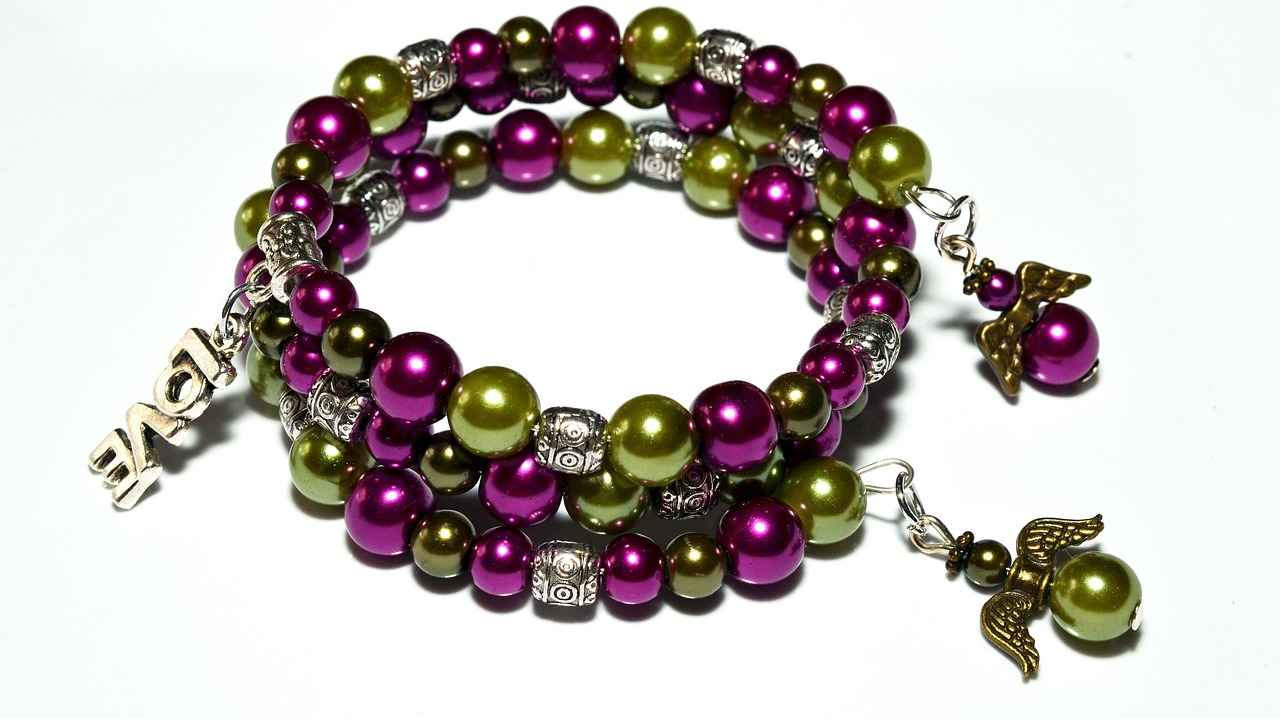
How to Store Jewelry During Inclement Weather?
When it comes to protecting your precious jewelry, understanding the right storage techniques during inclement weather is essential. Bad weather can lead to various forms of damage, from tarnishing to corrosion, making it imperative to take proactive measures. In this article, we will explore effective strategies for storing jewelry safely, ensuring that your valuable pieces remain in excellent condition regardless of the weather.
Extreme weather conditions, such as heavy rain, snow, or high humidity, can significantly impact your jewelry. Moisture can lead to tarnishing and rusting, particularly for metals like silver and copper. Additionally, extreme temperatures can cause gemstones to crack or lose their shine. Therefore, proper storage techniques are vital to ensuring the longevity of your jewelry.
- Use Padded Cases: Investing in padded jewelry cases can provide a protective barrier against impacts and moisture. These cases often come with compartments to keep different pieces separated, reducing the risk of scratching.
- Avoid Direct Sunlight: Prolonged exposure to sunlight can fade the color of gemstones and damage certain materials. Store your jewelry in a cool, dark place to maintain its integrity.
- Utilize Airtight Containers: For added protection against humidity, consider using airtight containers. These can help keep moisture at bay, particularly in humid environments.
Different types of jewelry require specific care. For instance, pearls and coral are organic materials that can be sensitive to humidity and temperature changes. It’s advisable to store these items in a soft cloth pouch or a separate compartment to avoid scratches. Similarly, gold and silver should be kept apart to prevent tarnishing and scratching.
Neglecting proper storage techniques can lead to irreversible damage. For example, exposure to moisture can result in tarnishing, which may require professional cleaning to restore the jewelry’s original shine. Furthermore, gemstones can become cloudy or lose their brilliance if not stored correctly. Regular inspections and maintenance can help mitigate these risks.
After exposure to harsh weather, it’s crucial to clean your jewelry promptly. Use a soft cloth to wipe away any moisture and dirt. For metals, a gentle jewelry cleaner can help remove tarnish. However, be cautious with gemstones, as some may require specific cleaning methods. Always refer to care instructions for each piece.
In addition to proper storage, consider applying a protective coating to your jewelry. These coatings can provide an extra layer of defense against moisture and temperature fluctuations. Regular maintenance, such as professional cleaning and inspections, can also prolong the life of your jewelry, ensuring it remains beautiful for years to come.
By following these storage techniques and care practices, you can effectively protect your jewelry from the damaging effects of inclement weather. Taking the time to implement these strategies will not only preserve the beauty of your pieces but also enhance their longevity, allowing you to enjoy them for many years.
What Are the Best Storage Practices for Different Jewelry Types?
When it comes to protecting your jewelry, storage practices play a crucial role. Different types of jewelry materials require specific methods to ensure their longevity and maintain their beauty. Understanding these practices can save you from costly repairs and replacements.
Jewelry is often a significant investment, both financially and sentimentally. Proper storage not only helps in preserving the aesthetic appeal but also prevents damage caused by environmental factors. Factors such as moisture, temperature fluctuations, and even physical contact can lead to scratches, tarnishing, or other forms of deterioration.
- Gold Jewelry: Gold is a durable metal, but it can still scratch easily. Store gold pieces in a soft cloth pouch or a padded jewelry box to prevent contact with other items.
- Silver Jewelry: Silver is prone to tarnishing. It is best to keep silver pieces in airtight containers or with anti-tarnish strips to minimize exposure to air.
- Gemstone Jewelry: Different gemstones have varying hardness levels. Store softer stones, like opal and pearl, separately from harder stones to avoid scratches. Padded compartments in jewelry boxes work well for this.
- Costume Jewelry: Costume jewelry often contains materials that can degrade over time. Keep these pieces in a cool, dry place, away from direct sunlight, and in separate compartments to prevent tangling or damage.
- Watches: Watches should be stored in a dedicated watch box or a soft cloth to protect the glass and prevent scratches on the band. Avoid placing them in areas with high humidity.
Organic materials like pearls, coral, and amber require special care. These materials can be sensitive to changes in temperature and humidity. Store them in a cool, dry place, away from harsh chemicals. A lined jewelry box is ideal for these precious items.
Improper storage can lead to irreversible damage. For instance, storing silver and gold together can cause scratching and tarnishing. Additionally, exposure to humidity can lead to mold growth on organic materials, compromising their integrity. Always consider the specific needs of each material when storing your jewelry.
Yes, applying protective coatings can significantly enhance the durability of your jewelry. Coatings create a barrier against moisture and environmental factors, helping to maintain the original shine and color of your pieces. Always consult a professional jeweler before applying any coatings to ensure compatibility with your jewelry materials.
When traveling, it’s essential to pack your jewelry carefully. Use a travel jewelry organizer that keeps items separated and cushioned. Avoid packing valuable pieces in checked luggage; instead, keep them in your carry-on for added security. Consider using a small, padded case to protect against impacts.
By following these best storage practices for different jewelry types, you can ensure that your collection remains beautiful and intact for years to come. Remember, the key to preserving your precious items lies in understanding their unique needs and taking proactive measures to protect them.
How Can You Use Protective Coatings for Jewelry?
Jewelry is not just an accessory; it is often a cherished possession that holds sentimental value. However, exposure to various environmental factors can significantly diminish its beauty and integrity. One effective way to protect your jewelry is through the use of protective coatings. This method creates a barrier that shields your pieces from moisture, temperature fluctuations, and other damaging elements.
Protective coatings are specialized layers applied to jewelry to enhance its durability and resistance to damage. These coatings can be made from various materials, including clear lacquers, silicone-based solutions, and other advanced polymers. By applying these coatings, you create a defensive shield that helps prevent tarnishing, scratching, and corrosion.
The primary function of protective coatings is to form a barrier between the jewelry and the external environment. This barrier prevents moisture from seeping into the metal, which is crucial in humid conditions. Additionally, coatings can help regulate temperature fluctuations that may cause certain materials to expand or contract, potentially leading to cracks or breaks.
- Extended Lifespan: By protecting your jewelry from environmental damage, coatings can significantly extend the life of your pieces.
- Enhanced Shine: Coatings can help maintain the original luster of your jewelry, keeping it looking new.
- Reduced Maintenance: With a protective layer, you may find that your jewelry requires less frequent cleaning and maintenance.
- Increased Resistance: Coatings can make your jewelry more resistant to scratches and other physical damages.
Applying protective coatings can be a simple process, but it requires attention to detail to ensure effectiveness. Here’s a step-by-step guide:
- Clean the Jewelry: Before applying any coating, ensure that the jewelry is thoroughly cleaned to remove any dirt or oils.
- Choose the Right Coating: Select a coating that is appropriate for the type of jewelry and the materials used.
- Apply Evenly: Use a soft brush or cloth to apply the coating evenly across the surface of the jewelry.
- Allow to Dry: Let the coating dry completely according to the manufacturer’s instructions before wearing the jewelry.
While protective coatings offer numerous benefits, there are some downsides to consider. For instance, some coatings may alter the appearance of the jewelry slightly, giving it a glossier finish than intended. Additionally, not all coatings are permanent; they may wear off over time and require reapplication. It’s essential to choose high-quality coatings and follow the application instructions carefully to minimize these issues.
If you frequently wear your jewelry in various environments, especially those with extreme weather conditions, applying a protective coating is advisable. This is particularly important for pieces made from softer metals or organic materials, which are more susceptible to damage. Regularly assess your jewelry for signs of wear and consider reapplying the coating as needed.
In conclusion, protective coatings serve as an essential tool in maintaining the beauty and longevity of your jewelry. By understanding how to use them effectively, you can enjoy your precious pieces for many years to come.
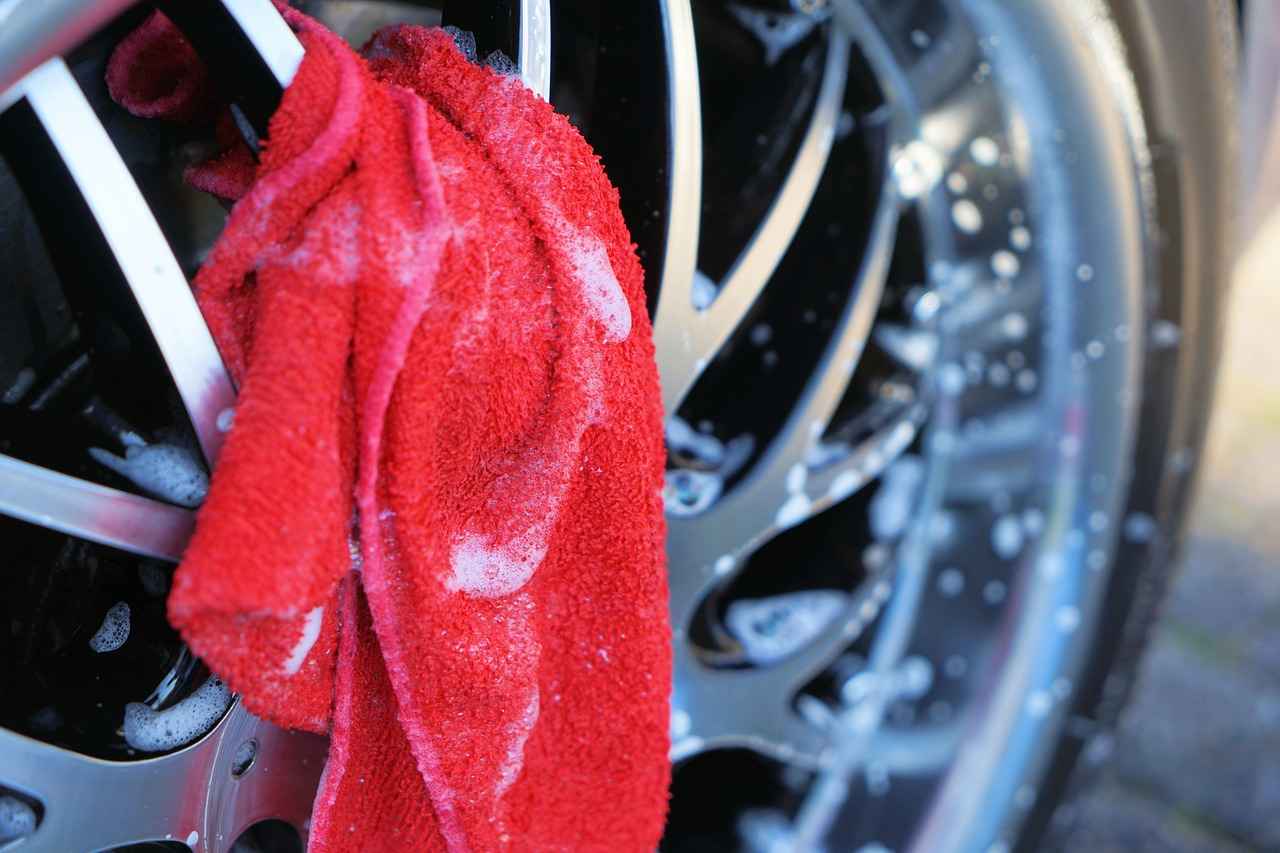
Which Jewelry Materials Are Most Vulnerable to Weather Damage?
When it comes to protecting your jewelry, understanding which materials are most vulnerable to weather damage is essential. Different metals and gemstones react uniquely to various weather conditions, which can affect their appearance and longevity. By identifying these vulnerable materials, you can make more informed choices about the jewelry you wear in specific weather scenarios.
Metals such as silver, copper, and brass are particularly susceptible to tarnishing and corrosion when exposed to moisture and humidity. Silver, for example, can develop a dark tarnish that detracts from its shine. To minimize damage, consider wearing stainless steel or platinum, which are more resistant to the effects of weather.
Gemstones vary widely in their durability. Soft stones like pearl and opal can be easily scratched and damaged by moisture and heat. Pearls, in particular, can suffer from discoloration and degradation when exposed to humidity. Conversely, diamonds and sapphires are more resilient, making them better choices for wear in harsh weather.
Organic materials such as coral and amber are sensitive to environmental changes. High humidity and extreme temperatures can cause these materials to warp or crack. It’s advisable to store such jewelry in a controlled environment and avoid wearing them during inclement weather.
Jewelry that has been coated or plated with a thin layer of metal, such as gold-plated items, can be particularly vulnerable. These coatings can wear off due to moisture and heat, exposing the base metal underneath, which may tarnish or corrode. Opt for solid metal pieces when planning to wear jewelry in adverse weather conditions.
- Avoid wearing sensitive materials in harsh weather.
- Store jewelry properly in a cool, dry place.
- Use protective coatings to enhance durability.
- Regularly clean and inspect your jewelry to catch any early signs of damage.
When selecting jewelry for specific weather conditions, consider the following factors:
- Material durability: Choose materials that can withstand the elements.
- Weather forecast: Be mindful of the predicted conditions before wearing your jewelry.
- Activities planned: If you expect to be active or outdoors, select more durable options.
Being aware of which jewelry materials are vulnerable to weather damage can save you from costly repairs and replacements. By making informed choices, you can enjoy your jewelry without the worry of damage from environmental factors. Always remember to assess the conditions and choose wisely to keep your precious pieces looking their best.
How Do Organic Materials Like Pearls and Coral React to Weather?
Organic materials, such as pearls and coral, are known for their stunning beauty and unique characteristics. However, they are also particularly sensitive to environmental changes. Understanding how these materials react to various weather conditions is essential for maintaining their beauty and integrity over time.
Organic materials are derived from living organisms, which makes them inherently different from traditional gemstones and metals. Factors like temperature, humidity, and exposure to sunlight can significantly impact their condition. For instance, high humidity can cause pearls to absorb moisture, leading to potential damage and loss of luster.
Humidity plays a critical role in the longevity of organic materials. Pearls, composed of calcium carbonate, can become dull and lose their shine when exposed to excessive moisture. Similarly, coral can suffer from discoloration and degradation in high humidity environments. To combat these effects, it is advisable to store these items in a climate-controlled environment and avoid wearing them during particularly humid days.
- Keep it Dry: After exposure to water or humidity, gently wipe pearls and coral with a soft cloth.
- Avoid Chemicals: Stay away from lotions, perfumes, and cleaning products that can damage organic materials.
- Regular Inspections: Periodically check for signs of wear or damage, ensuring prompt repairs.
- Proper Storage: Store pearls and coral in soft pouches or lined boxes to prevent scratching and exposure to moisture.
Extreme temperatures can also pose a threat to pearls and coral. High heat can cause pearls to dry out, leading to cracks, while cold temperatures can make them brittle. It’s crucial to avoid leaving organic jewelry in direct sunlight or near heat sources. Instead, opt for a cool, dark place for storage.
To ensure the longevity of your organic jewelry, avoid:
- Wearing them in swimming pools or hot tubs where chlorine can cause damage.
- Exposing them to harsh chemicals found in household cleaners.
- Storing them in plastic bags, which can trap moisture and lead to deterioration.
If your pearls or coral have lost their shine, consider seeking professional cleaning services that specialize in organic materials. They can provide the gentle care needed to restore their natural beauty without causing further damage.
In conclusion, understanding how organic materials like pearls and coral react to weather conditions is vital for their care. By implementing proper storage techniques and regular maintenance, you can ensure that these beautiful pieces remain a cherished part of your jewelry collection for years to come.
What Should You Avoid When Wearing Jewelry in Bad Weather?
When it comes to protecting your jewelry, understanding the risks associated with bad weather is vital. Certain activities and conditions can exacerbate damage to your precious pieces. In this section, we will explore what you should avoid when wearing jewelry in adverse weather conditions to help you maintain the beauty and longevity of your collection.
Jewelry is often made from delicate materials that can be easily affected by environmental factors. Exposure to harsh weather can lead to tarnishing, corrosion, and even physical damage. By being aware of the conditions that can harm your jewelry, you can take steps to protect it effectively.
- Rain and Snow: Water can cause metals to corrode and stones to lose their luster.
- Humidity: High humidity levels can lead to tarnishing and cloudiness in gemstones.
- Extreme Heat: Prolonged exposure to heat can weaken materials and cause stones to crack.
Engaging in certain activities while wearing jewelry can increase the risk of damage. Here are some to steer clear of:
- Avoid Swimming: Chlorine and saltwater can be highly damaging to metals and stones.
- Steer Clear of Heavy Lifting: Physical impacts can lead to scratches and breaks.
- Limit Exposure to Harsh Chemicals: Cleaning products, perfumes, and lotions can tarnish or damage your jewelry.
To ensure your jewelry remains in top condition, consider the following protective measures:
- Remove Jewelry Before Engaging in Activities: Always take off your jewelry before swimming, exercising, or using harsh chemicals.
- Store Jewelry Properly: Use soft pouches or padded cases to prevent scratches when not in use.
- Apply Protective Coatings: Consider using a protective spray or coating designed specifically for jewelry.
If your jewelry has been exposed to harsh weather, it’s essential to take immediate action:
- Clean Your Jewelry: Gently clean your pieces with a soft cloth to remove any moisture or residue.
- Inspect for Damage: Check for any signs of wear or damage, and address them promptly.
- Store Safely: Place your jewelry in a dry, cool area to prevent further damage.
By being proactive and avoiding certain conditions and activities, you can keep your jewelry looking stunning and extend its lifespan. Remember, prevention is always better than repair.

What Are the Best Practices for Jewelry Maintenance?
Jewelry maintenance is essential for preserving the beauty and longevity of your treasured pieces. Regular upkeep not only enhances their appearance but also protects them from environmental factors that can cause damage. This article will explore the best practices for jewelry maintenance, ensuring your items remain in excellent condition for years to come.
Over time, dirt, oils, and environmental pollutants can accumulate on your jewelry, leading to tarnishing and dullness. Regular maintenance helps to:
- Enhance Shine: Cleaning your jewelry restores its original luster.
- Prevent Damage: Regular inspections can identify potential issues before they worsen.
- Extend Lifespan: Proper care can significantly increase the longevity of your pieces.
Establishing a regular cleaning schedule is crucial. For most jewelry, a good rule of thumb is to clean it every 1 to 3 months, depending on how often you wear it. Items worn daily, like engagement rings, may require more frequent cleaning.
Different materials require specific cleaning techniques to avoid damage:
- Gold and Silver: Use a mild soap solution and a soft cloth. Avoid harsh chemicals.
- Gemstones: Check the hardness and type of stone; some may require professional cleaning.
- Pearls: Wipe with a damp cloth after wearing. Avoid submerging them in water.
Regular inspections can help identify issues early. Pay attention to:
- Loose Stones: Check for any stones that may be shifting or coming loose.
- Worn Prongs: Ensure that the prongs holding stones are intact and not thinning.
- Tarnish and Discoloration: Look for signs of tarnish, especially on silver pieces.
Correct storage is vital to prevent damage:
- Airtight Containers: Use airtight boxes with silica gel packets to absorb moisture.
- Separate Storage: Store different types of jewelry separately to avoid scratches and tangling.
- Temperature Control: Keep jewelry in a cool, dry place away from direct sunlight.
Engaging a professional jeweler for periodic maintenance can provide specialized care. Services include:
- Deep Cleaning: Professional cleaning can remove deep-set tarnish and dirt.
- Repairs: Jewelers can fix loose stones, worn prongs, and other issues.
- Inspections: Regular professional assessments can help catch problems early.
Investing time in jewelry maintenance yields numerous benefits:
- Increased Value: Well-maintained jewelry retains its value better over time.
- Enhanced Aesthetics: Regular care keeps pieces looking their best, enhancing your overall appearance.
- Emotional Connection: Maintaining jewelry can deepen your connection to cherished pieces.
By following these best practices for jewelry maintenance, you can ensure that your precious items remain beautiful and intact, allowing you to enjoy them for years to come.
How Often Should You Clean Your Jewelry?
Jewelry is not just a collection of precious items; it often holds sentimental value and is a reflection of personal style. To ensure that your jewelry remains stunning and maintains its integrity over time, establishing a regular cleaning schedule is essential. This article delves into the importance of routine cleaning, how often you should clean different types of jewelry, and practical tips to keep your pieces looking their best.
Over time, jewelry can accumulate dirt, oils, and other residues that dull its shine. Regular cleaning not only enhances the appearance of your jewelry but also prevents long-term damage. For instance, tarnishing can occur on metals like silver when they are exposed to air and moisture. By establishing a cleaning routine, you can effectively combat these issues and keep your jewelry in optimal condition.
- Daily Wear Jewelry: Items that you wear every day, such as wedding rings or bracelets, should be cleaned at least once a week. This helps remove any accumulated dirt and oils.
- Occasional Wear Jewelry: Pieces worn less frequently can be cleaned every month. This ensures that they remain vibrant and free from tarnish or dust.
- Fine Jewelry: For high-value items, consider professional cleaning every six months. Experts can provide deep cleaning and inspection for any potential issues.
Cleaning your jewelry doesn’t have to be complicated. Here are some effective methods:
- Use Mild Soap and Water: A gentle solution of soap and warm water is often enough for a quick clean. Soak your jewelry for a few minutes, then gently brush with a soft toothbrush.
- Dry Thoroughly: After cleaning, make sure to dry your jewelry completely to prevent moisture buildup, which can lead to tarnishing.
- Avoid Harsh Chemicals: Stay away from bleach or abrasive cleaners, as they can damage certain metals and stones.
In addition to regular cleaning, there are several strategies to maintain the shine of your jewelry:
- Store Properly: Use soft cloths or individual pouches to prevent scratches and tangling. Avoid storing different types of metals together.
- Limit Exposure: Remove jewelry before engaging in activities that may expose it to chemicals, such as swimming or cleaning.
- Professional Care: For intricate pieces or those with gemstones, consider professional maintenance to ensure they are cared for properly.
After wearing your jewelry, it’s a good practice to give it a quick clean. Wipe it down with a soft cloth to remove any oils or dirt before storing it away. This simple step can significantly prolong the life and appearance of your pieces.
In summary, establishing a cleaning routine based on the frequency of wear and the type of jewelry is crucial for maintaining its beauty and integrity. By following these guidelines, you can ensure that your jewelry remains a cherished part of your collection for years to come.
What Professional Services Can Help with Jewelry Care?
When it comes to maintaining the beauty and integrity of your jewelry, professional services play a crucial role. Engaging skilled jewelers for cleaning and maintenance can provide specialized care that extends the life of your jewelry, ensuring it remains beautiful for years to come. In this section, we explore the various professional services available and how they can benefit your precious items.
Professional jewelers possess the expertise and tools necessary to handle various types of jewelry materials, including metals, gemstones, and organic materials. They can identify specific issues that may not be apparent to the untrained eye, such as hidden scratches or loose settings. By opting for professional care, you ensure that your jewelry receives tailored attention that DIY methods may not provide.
- Cleaning: Professional cleaning services utilize advanced techniques and equipment to remove dirt, oils, and tarnish, restoring your jewelry’s original shine.
- Inspection: Regular inspections can help identify potential problems early, such as loose stones or weakened clasps, allowing for timely repairs.
- Repair: Jewelers can expertly repair damaged pieces, including re-setting stones, soldering broken chains, and fixing clasps.
- Restoration: For vintage or heirloom pieces, restoration services can bring back the original beauty, often using techniques that respect the integrity of the piece.
- Customization: If you’re looking to create a unique piece or modify an existing one, professional jewelers can provide design services tailored to your vision.
The frequency of professional care can depend on how often you wear your jewelry and the conditions it is exposed to. For everyday pieces, a professional cleaning and inspection every six months is advisable. More delicate or seldom-worn items may benefit from annual check-ups. Regular maintenance not only keeps your jewelry looking its best but also helps prevent costly repairs down the line.
Investing in professional jewelry care offers several advantages:
- Expertise: Trained professionals understand the intricacies of various materials and can provide care specific to each piece.
- Enhanced Longevity: Regular maintenance can significantly extend the lifespan of your jewelry, making it a worthwhile investment.
- Peace of Mind: Knowing that your jewelry is in the hands of experts allows you to wear it with confidence, free from worries about potential damage.
While professional services are vital, there are some simple maintenance tasks you can perform at home to keep your jewelry in good condition. Regularly wiping your pieces with a soft cloth can help remove oils and dirt. Additionally, storing your jewelry in a cool, dry place, away from direct sunlight, can prevent tarnishing and damage.
In conclusion, engaging professional jewelers for cleaning and maintenance is an essential practice for anyone who values their jewelry. The specialized care they provide not only enhances the beauty of your pieces but also ensures their longevity. By understanding the services offered and the importance of regular maintenance, you can protect your investment and enjoy your jewelry for years to come.
Frequently Asked Questions
- How can I protect my jewelry from humidity?
To protect your jewelry from humidity, consider using silica gel packets in your storage containers. These little moisture-absorbers can make a big difference in keeping your pieces safe from tarnishing and cloudiness.
- What should I do if my jewelry gets wet?
If your jewelry gets wet, dry it immediately with a soft cloth. This helps prevent any long-term damage from moisture. Regular cleaning after exposure to water is also crucial for maintaining its beauty.
- Is it safe to wear jewelry in extreme heat?
Wearing jewelry in extreme heat can be risky. Heat can weaken certain materials and even cause gemstones to crack. It’s best to avoid wearing your favorite pieces during hot weather or when engaging in activities that might expose them to high temperatures.
- What are the best storage practices for different types of jewelry?
Different materials require different care. For instance, store gold and silver separately to prevent scratching. Use padded cases for delicate items and keep them away from direct sunlight to avoid fading and damage.
- How often should I clean my jewelry?
It’s a good idea to clean your jewelry regularly, especially after wearing it. Establish a routine based on how often you wear each piece. This will help maintain its shine and integrity over time.

